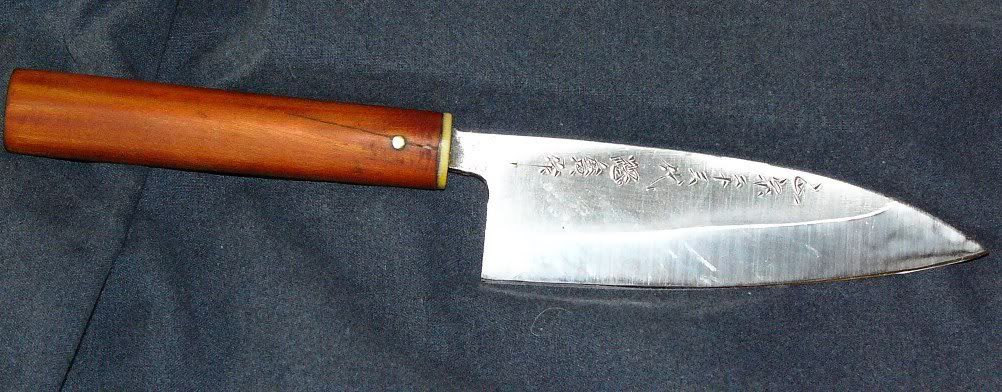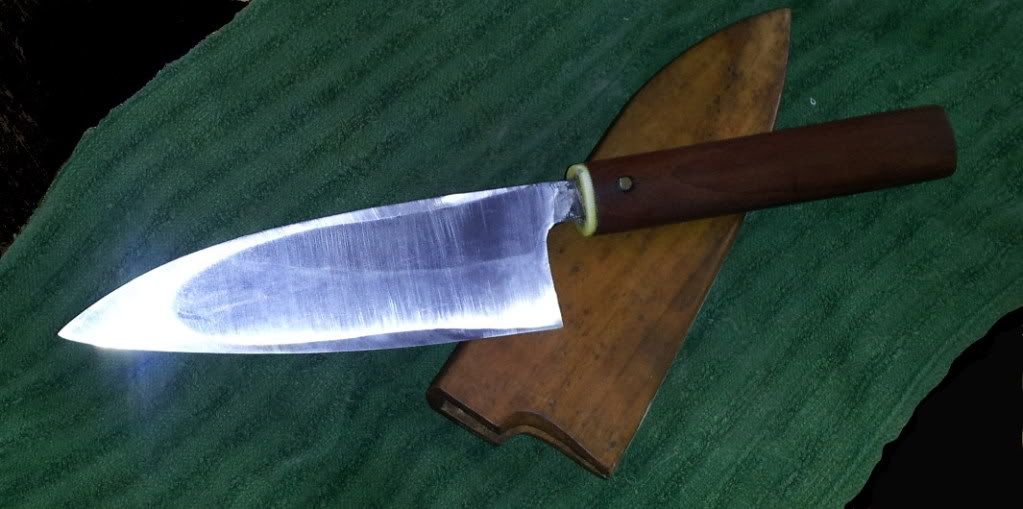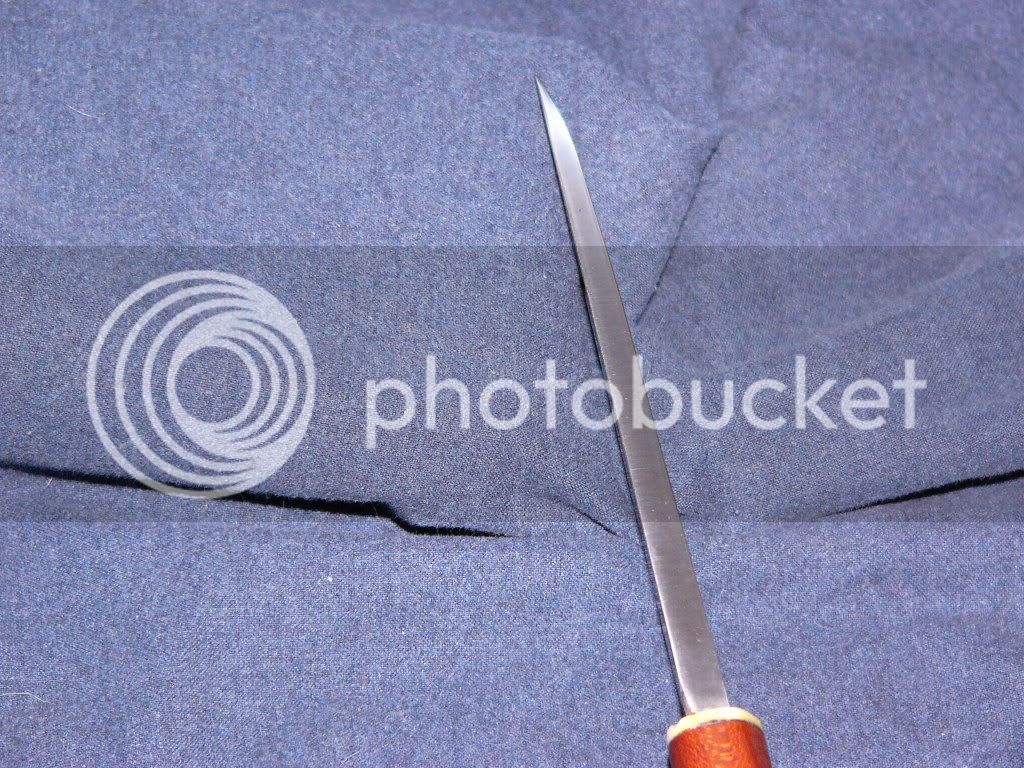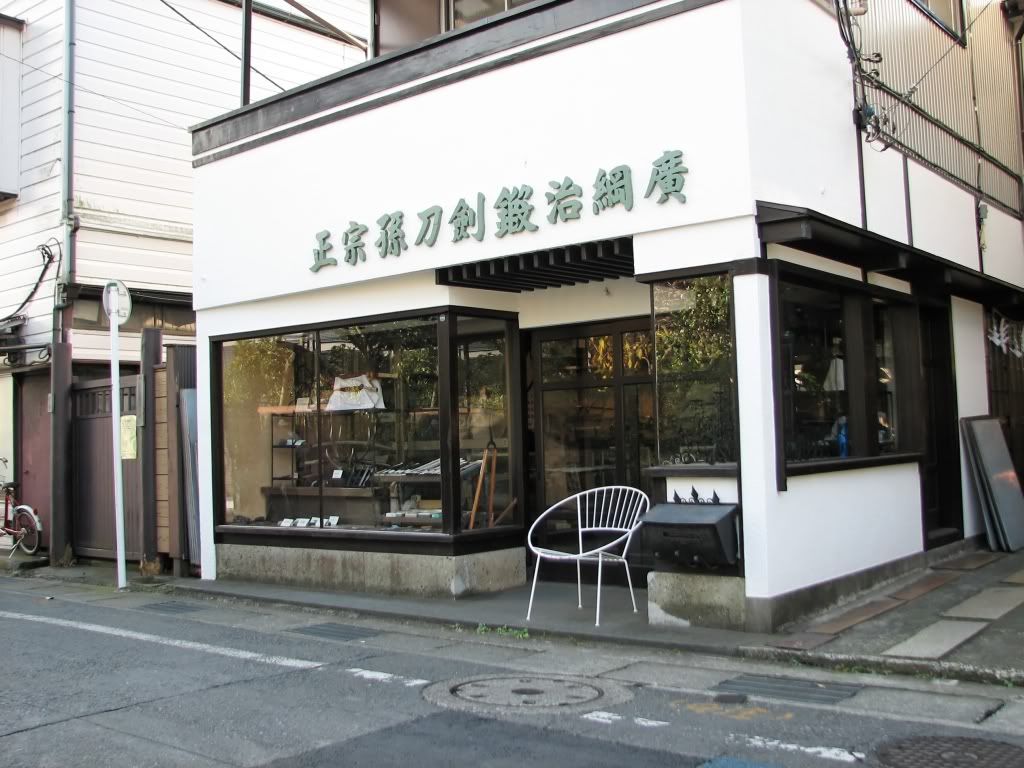Dr_Jim
Member
- Joined
- Aug 1, 2012
- Messages
- 11
- Reaction score
- 0
Well, not really 'of Doom' - but who can resist such a snappy, alliterative title....



This small Deba dates from the late '40's or early '50's - part of a set made for a woman who was about 4' 10" tall and maybe 95 pounds dripping wet - so all of the knives are somewhat undersized, but they seem well-made, all have fitted Sayas, and have seen many years of hard service.
One unusual feature on all four knives is the inset bolster and pinned tang - which I've not seen on any recent knives. Yeah the recessed bolster does have a smooth, sleek, 'aerodynamic' look, but it has to be seriously weak, as three of the handles show repaired cracks.
The set consists of four knives, a 155mm Deba, a 210mm Yanagiba, a 180mm Nakiri, and a 220mm Suminagashi - my furshlugginer camera died while shooting the Deba, but I'll post more pictures to this thread when it returns.
All of the blades are signed, so if someone on the board can read cursive Kanji, or perhaps hirigana script, maybe their origin can be found - we think that they may have been purchased through the Kintetsu Department store in Osaka, but that's a guess since we know the family had an account there.
Here's a close up of the maker's signature in a vertical orientation:

Which may help to read the letters - and no, I've not a clue as to why these pictures are coming out so blessedly small - mutter, mutter, mutter....
Any help would be much appreciated.
Cheers
Jim



This small Deba dates from the late '40's or early '50's - part of a set made for a woman who was about 4' 10" tall and maybe 95 pounds dripping wet - so all of the knives are somewhat undersized, but they seem well-made, all have fitted Sayas, and have seen many years of hard service.
One unusual feature on all four knives is the inset bolster and pinned tang - which I've not seen on any recent knives. Yeah the recessed bolster does have a smooth, sleek, 'aerodynamic' look, but it has to be seriously weak, as three of the handles show repaired cracks.
The set consists of four knives, a 155mm Deba, a 210mm Yanagiba, a 180mm Nakiri, and a 220mm Suminagashi - my furshlugginer camera died while shooting the Deba, but I'll post more pictures to this thread when it returns.
All of the blades are signed, so if someone on the board can read cursive Kanji, or perhaps hirigana script, maybe their origin can be found - we think that they may have been purchased through the Kintetsu Department store in Osaka, but that's a guess since we know the family had an account there.
Here's a close up of the maker's signature in a vertical orientation:

Which may help to read the letters - and no, I've not a clue as to why these pictures are coming out so blessedly small - mutter, mutter, mutter....
Any help would be much appreciated.
Cheers
Jim








